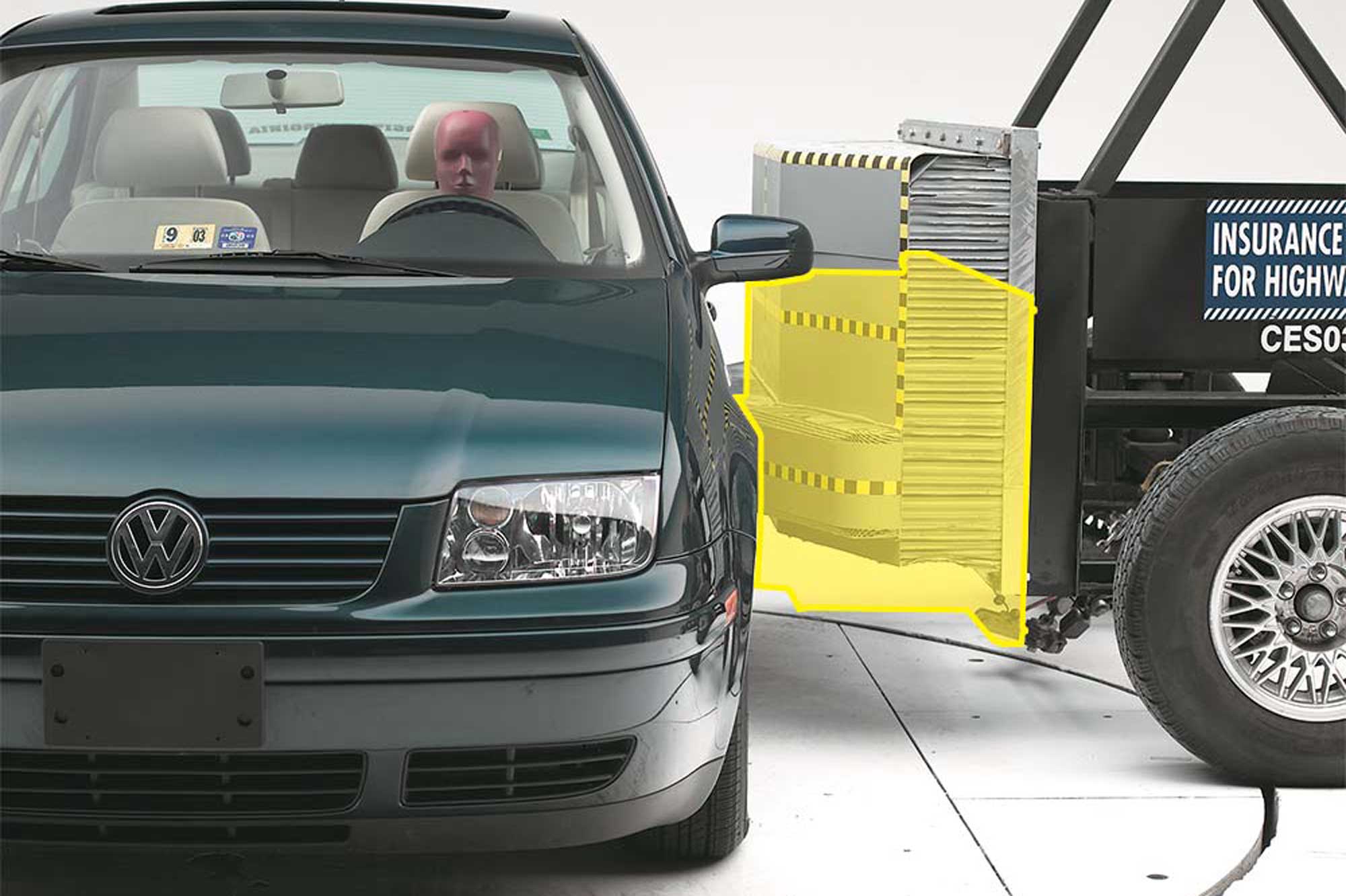What to Know About IIHS Safety Ratings for Headlights
Efficient high- and low-beams make for safer driving.
 IIHS
IIHS
QuickTakes:
Founded in 1959, the Insurance Institute for Highway Safety is an independent, nonprofit research organization dedicated to furthering motor-vehicle safety standards. It conducts tests on the vast majority of new vehicles and rates the efficacy of their active and passive safety systems as well as their crashworthiness with a score of good, acceptable, marginal, or poor. The top performers earn either a Top Safety Pick or Top Safety Pick+ award.
To qualify as a Top Safety Pick, a vehicle must earn high marks in all six crash and strength tests. It must also have an advanced or superior active front crash-prevention system and available headlights with an acceptable or good rating. To qualify for a Top Safety Pick+ award, a vehicle (and all others in its model range) must come standard with headlights ranked acceptable or better.
How Have Headlights Changed?
Since the first high- and low-beam headlights debuted on Cadillacs more than a century ago, lighting technology has improved immensely, giving drivers better visibility in all sorts of conditions. Sealed-beam headlights were supplanted by halogens, which gave way to superior high-intensity-discharge and LED lamps. Other advances include automatic high-beams, which utilize sensors to trigger the brights at the correct time, and curve-adaptive headlights, which swivel in the direction of a corner based on the angle of the steering wheel.
How Does the IIHS Test Headlight Performance?
Engineers at the IIHS measure headlight reach in a straight line and around gradual (800-foot-radius) and sharp (500-foot-radius) corners. On a test track, sensors measure how far the vehicle's low- and high-beams extend with a minimum intensity of five lux. (For reference, one lux is about equivalent to the amount of light cast on the ground by a full moon on a cloudless night.) The IIHS then compares the illumination distances with those of a hypothetical ideal headlight system and provides a rating.
Why Are Headlights So Important to the IIHS?
According to a
The National Library of Medicine journal published a study that found a disproportionate number of traffic deaths occur at night, even while the number of miles traveled drops after dark. Understanding the inherent correlation therein, the IIHS began testing headlamps. During the first test year, in 2016, it awarded a good rating to just one system. Five years later, automakers had responded, and the proportion of tested systems with a good rating increased from 4% to 29% — a noteworthy improvement over a relatively short span of time. Moreover, using a



